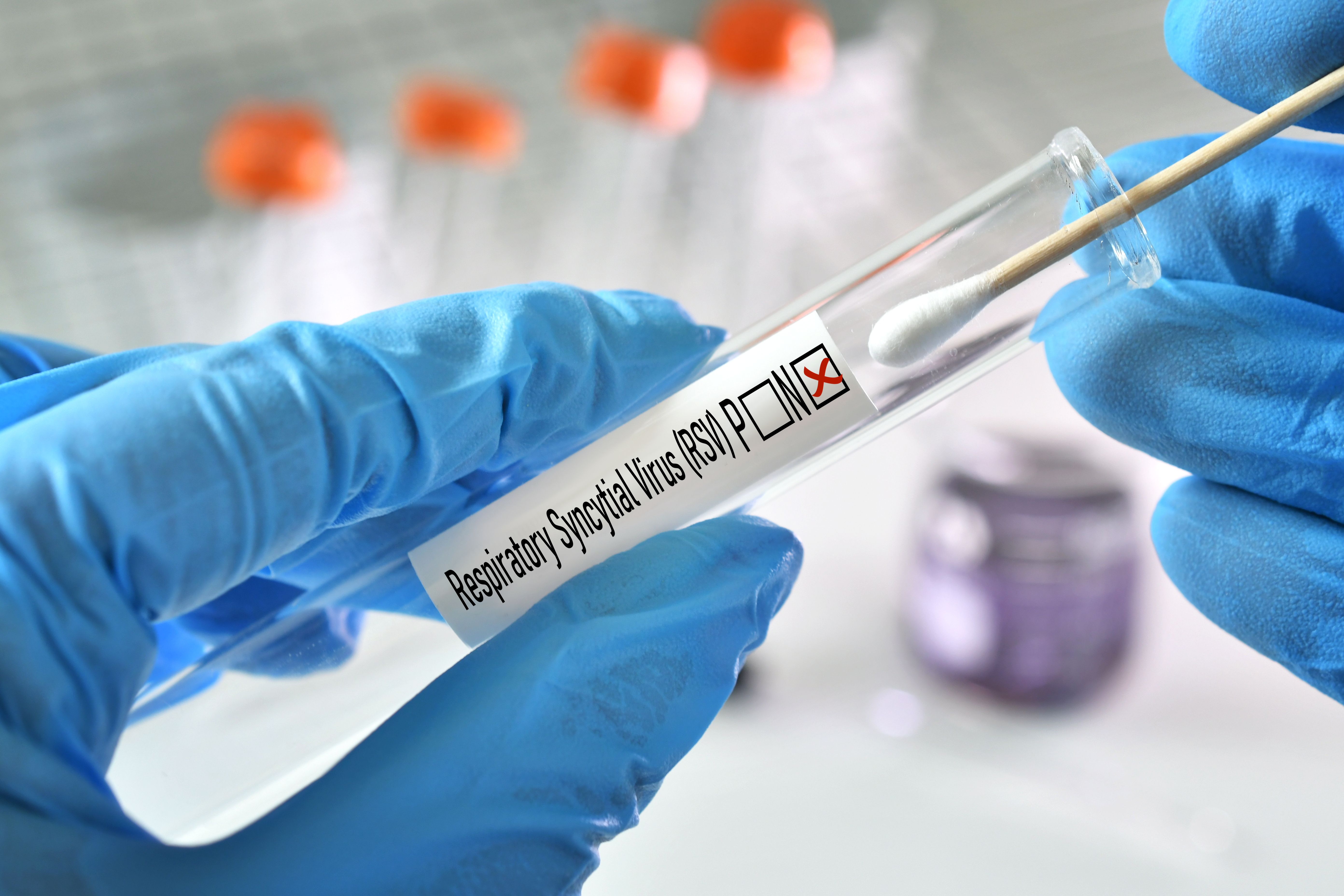- Center on Health Equity & Access
- Clinical
- Health Care Cost
- Health Care Delivery
- Insurance
- Policy
- Technology
- Value-Based Care
RSV Testing Among Infants With Bronchiolitis Is Increasing, Study Shows
Despite rising trends in respiratory syncytial virus (RSV) testing, more outpatient testing is needed for accurate RSV surveillance.
Since 2015, respiratory syncytial virus (RSV) testing among infants has increased across all health care settings and sociodemographic groups. However, outpatient testing remains disproportionately low.1
The results of the real-time clinical and viral surveillance study was published in Annals of Epidemiology.

“Potential changes to RSV testing practices in each health care setting are important to understand to accurately assess the burden of RSV among different sociodemographic populations, due to racial and ethnic differences in health care utilization and known differences in the incidence of RSV bronchiolitis among publicly- vs privately-insured infants,” wrote the researchers of the study.
RSV is the leading cause of bronchiolitis, accounting for 3 million annual worldwide hospitalizations.2 RSV-associated bronchiolitis can lead to hospitalization among infants, with severe cases leading to pediatric intensive care unit (PICU) admission and ventilatory support.
In this study, electronic health record (EHR) data was reviewed across 4 health care systems between the 2015 to 2016 and 2022 to 2023 RSV seasons, with the aim of describing trends in RSV testing among infants with bronchiolitis.1 Both the outpatient setting and inpatient and emergency department (ED) setting were analyzed. In total, 20,752 encounters for bronchiolitis among infants were captured across all 4 health care systems for the duration of the study.
Additionally, race and ethnicity data were included. Infants identified as Black or White in the EHR could be any ethnicity, and Hispanic infants could be any race. Infants identified as 2 or more races were excluded from analyses of Black or White infants. Furthermore, Asian, American Indian or Alaska Native, and Native Hawaiian or other Pacific Islander patients accounted for only 3.6% of all infant bronchiolitis encounters and were not specifically analyzed for this study.
Prior to the onset of the COVID-19 pandemic, RSV testing rates increased during peak RSV disease within each health care system in 2020. From 2015 to 2016 and 2019 to 2020, peak testing increased 1.5- to 5-fold, with the highest level of pre–COVID-19 peak testing at around 60% in 2019 to 2020.
After March 2020, testing rates further increased, with the leading systems in this study at 80% to 90% testing among all infants with bronchiolitis.
However, the researchers noted that frequency of RSV testing has historically varied by health care setting, particularly for outpatient encounters where testing may be considered medically unnecessary or too expensive. All health care settings in this study exemplified this trend, with lower proportions of infants with bronchiolitis who underwent outpatient, urgent care, and telemedicine testing compared with inpatient/ED encounters.
The researchers acknowledged the study was limited due to its descriptive nature, that it did not examine any factors within health care systems that could influence testing patterns, rates of infant bronchiolitis, and that it did not examine factors that could influence health-seeking behaviors in each sociodemographic group.
Despite these limitations, the researchers believe the study identified a positive trend in RSV testing among infants with bronchiolitis. However, the researchers also believe the study also highlighted a significant gap in OP testing among this patient population.
“Increasing [outpatient] testing to rates more in line with [inpatient]/ED testing could be a way to improve estimates of infant RSV bronchiolitis across multiple demographics,” wrote the researcher. “These data would also be extremely useful in better defining local RSV epidemics and ultimately helping healthcare systems prepare for the logistical challenges of ensuring all eligible infants receive nirsevimab in a timely manner at the start of the RSV season.”
References
1. Blatt AZ, Suh M, Walter EB, et al. Trends in RSV testing patterns among infants presenting with bronchiolitis: Results from four United States Health Systems, 2015-2023. Annals of Epidemiology. 2024;94:72-80. doi:10.1016/j.annepidem.2024.04.010
2. Steinzor P. Nirsevimab reduces risk of RSV-associated bronchiolitis, study finds. July 18, 2024. https://www.ajmc.com/view/nirsevimab-reduces-risk-of-rsv-associated-bronchiolitis-study-finds
The Breakdown: Breast Cancer Research Awareness Day
August 19th 2025Breast cancer is the second most common cancer among women and the second leading cause of cancer-related deaths among women in the US. In light of Breast Cancer Research Awareness Day, The American Journal of Managed Care® breaks down the most recent advancements in breast cancer prevention, screening, and therapies.
Listen
Politics vs Science: The Future of US Public Health
February 4th 2025On this episode of Managed Care Cast, we speak with Perry N. Halkitis, PhD, MS, MPH, dean of the Rutgers School of Public Health, on the public health implications of the US withdrawal from the World Health Organization and the role of public health leaders in advocating for science and health.
Listen
Cefdinir Nearly Doubles Outpatient Uncomplicated UTI Treatment Failure Compared With Cephalexin
November 11th 2025Cefdinir is linked to nearly double the outpatient uncomplicated UTI treatment failure of cephalexin, with higher recurrence and increased resistance to other cephalosporins.
Read More
